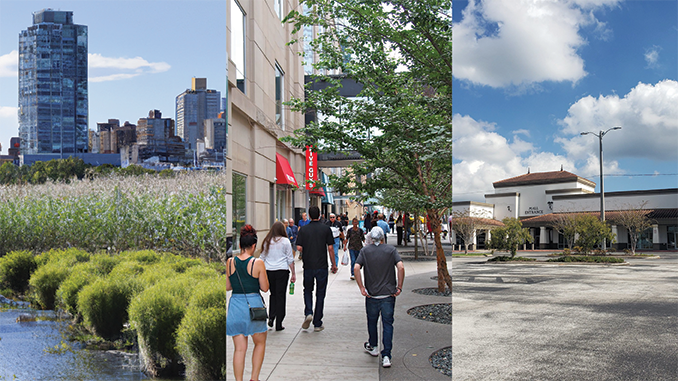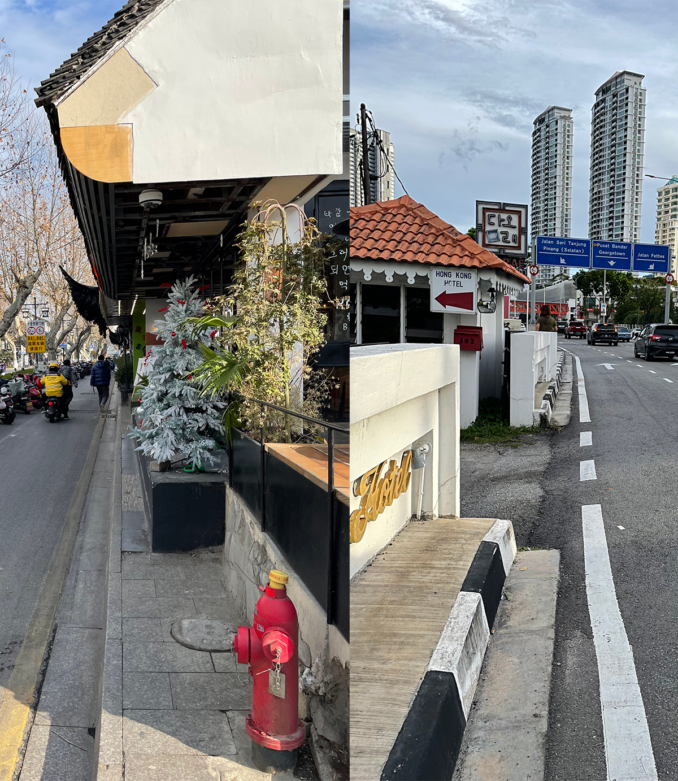
Every year, I look to provide some insights into the landscape architecture trends for 2024. You can read my review of last year’s trend insights to see how I did in 2023.
Trends can be short or long-term, and most landscape architecture trends are long-term due to the nature of the landscape and the design profession. Although there are many landscape architecture trends, I aim to outline current trends, commentary, and solutions in the hope that it will give you ideas to discuss with colleagues or your faculty to further your understanding and involvement in landscape architecture.
Climate Change
This is a worldwide problem we will grapple with for decades. However, we have a greater understanding of the issues, and we have moved from continuously discussing the issues to starting to take action over the past 3-4 years.
Mitigation to adaptation
Carbon emissions (measuring, reduction, etc.) have been the focus of the world’s design professions for the past decade and will continue. Many countries (especially island nations) are already feeling the brunt of climate change and seeking assistance from the UN or neighbouring countries. Therefore, the focus will shift from carbon and climate change mitigation to climate adaptation. Due to the unpredictability of climate (weather) events, landscape architects should continue to design for climate mitigation and focus more on climate adaptation and resilience.
Accountability
Many Design firms and governments have developed policies and guidelines and set climate targets for the end of the decade. As we start heading towards 2025, there is a greater need for action and accountability for implementing policy. There seems to be a disconnect between policies, guidelines, initiatives, and their implementation in private and public projects. Although there are some great results in landmark projects, there appears to be a need for a more significant cultural shift in understanding that all levels of government and companies must follow policies to achieve the targets set.
Tools and Standards
In recent times, it has been motivating to see the creation of such tools as Pathfinder, Carbon Conscious, and others; however, it appears that many companies are creating tools to measure project carbon emissions and provide carbon sequestration. There is a need for landscape design firms and professional associations to come together to agree to a standard and share information while complying with laws in their country. By becoming more proactive in promoting a tool or standard approach will ensure that landscape architects are directing their energy to design better projects and educating others.
Suppose we do not come together to use a standard approach and measure. In that case, I feel that clients (government and private) will start looking to ISO or other standards that align with their environmental objectives or certifications, which may sideline landscape architecture and minimise the great impact we could have in combating climate change.
Assessments
We will see a greater need to assess existing landscapes and their performance concerning climate change. Many of the policies and initiatives are tailored for new projects; however, there are opportunities to improve the performance of existing landscapes to reduce emissions and increase the benefits of landscapes to their communities. Cities may need landscape architects to assist with assessing landscapes to determine opportunities to enhance their landscape performance using multiple criteria concerning carbon emissions, soil, water, biodiversity, activity, and other factors.
Transport
Pedestrian safety and comfort
In recent years, we have seen pedestrian deaths increase in some cities due to various factors, including vehicle size, inattentive drivers/pedestrians, and lack of walkways(footpaths/sidewalks), while also a decrease in pedestrian comfort with more pedestrian space (plazas and walkways) being dedicated to the movement and parking of shared bikes/scooters, electric mobility (e-bikes, e-scooters, e-motorbikes/mopeds). The communities in many countries are asking why we are seeing an increase in pedestrian deaths and injuries. In 2024, governments, landscape architects, engineers, and other design professionals must address these pedestrian safety issues.

Design solutions will have to be tailored to local factors and cultures. Landscape architects should look to modify or design public spaces to allow safe pedestrian movement. This can be achieved through adding walkways, increasing bike lane widths to allow for multi-speed users (bike vs. e-bike vs e-moped), or alternative it may be more the need to design end-of-trip facilities or, as in some countries, setting a maximum speed (such as 25kph/15mph) for e-mobility vehicles to increase safety. Education and design solutions must be coordinated to improve pedestrian safety.

Charging networks
As the sales of electric vehicles are increasing in most countries that have set targets for electric vehicle-only sales (e.g. UK, USA, China by 2035) we will see an increase in the demand for on-street charging. However, we need to work with other disciplines to assess whether they are required. I am concerned that vehicle manufacturers and electricity companies will pressure governments into using public space for charging infrastructure. Landscape architects will be tasked with integrating the charging facilities into the public spaces already under pressure to provide public and private uses. Placing more infrastructure in a seemingly ever-shrinking public space will create added pressure. Cities will need to balance the pressures of private companies and the public demand for charging networks and ultimately often need to push back on private companies to use private land for charging infrastructure.
Education & Profession
Design vs STEM
The debate about Art vs. Science has been ongoing since before Michelangelo. Similarly, the Design vs. STEM debate in landscape architecture has been ongoing for many years; however, the debate increased last year when landscape architecture courses in the USA were given STEM designation to improve international student’s ability to stay and work in the USA. This debate will continue, and I understand both sides are concerned about whether one discipline will overpower the other. However, the discussion is a moot point when we have (anecdotal) declining enrollments in landscape architecture courses, and some programs may cease altogether. The focus should be less on whether design or science is the most crucial discipline or study within landscape architecture, and the focus should be on maintaining the current courses and improving student enrollment numbers.
Declining Numbers
Following the above, we also have anecdotal reports of declining numbers of landscape architects in some countries (e.g., China and the UK). Some have suggested that this is due to COVID, while others raise concerns that this is an ongoing trend in light of declining student numbers. From my discussion with senior professionals in various countries, there seem to be many factors to attribute to the decline, including salaries (compared to other fields), working hours, shorter careers, and long pathways within design firms to become a lead designer or manager.
The salaries and working hours are something that all firms and professional organisations should be looking at to solve. However, I think all professions (architects, landscape architects, engineers, accountants, lawyers, etc.) face similar challenges due to cultural shifts from professional careers.
Most current secondary and tertiary education graduates will have many careers in their lifetime. Becoming a Landscape Architect can take considerable time (6-8 years), money (depending on the country), and education to become a qualified professional. In the age of the internet, social media, and artificial intelligence, this may (rightly or wrongly) seem a long time for a person to commit to becoming a landscape architect and to then realise that after 3-5 years that they don’t wish to go the traditional path of Graduate to Senior to Associate to Leader, and that want to do something else. Gone are the days of being a landscape architect for life, and it is time that the landscape profession needs to change its approach by providing shorter programs, alternative pathways (apprenticeships/traineeships for secondary graduates), fast-paced in-house training rather than on job learning, and professional development courses to create industry-ready graduates and differing career paths within the industry. Also, there needs to be recognition that landscape architecture is a generalist profession, that not all landscape architects wish to be designers, and that there should be different typologies of professional qualifications. These are some solutions, but there is a need to shift the approach to ensure a vibrant future for the profession.
Project Management
Over the past few years, as landscape architects have taken a more significant lead role on design projects, we have been required to learn more about project management and risk as we moved from always being the sub-consultant to lead consultant. This trend will require more training for landscape architects in project management, client/consultant relationships, and understanding risk management concerning design, legal, and commercial issues.
Technology
Artificial intelligence
We have already seen the impact of artificial intelligence on image representation and idea generation. Many designers have utilised artificial intelligence to generate ideas or reimagine an idea through reiteration. We have also seen the speed of change with software such as Photoshop that can now easily modify and adjust images in seconds, and other programs (e.g. AutoCAD) have inbuilt artificial intelligence functions to improve efficiency.

Moving beyond image representation, we will see more reiteration or design optioning generated by artificial intelligence through the use of parameters (function/program, hard vs soft) and then into developing calculations for costing, carbon emissions, and other analysis that can add value to the decision making and design process. Utilising artificial intelligence for demographic and climate analysis and developing user scenarios using demographic and user data will provide a valuable tool for landscape architects.
Knowledge management is a key benefit of artificial intelligence, as many firms have expansive knowledge and data stored within their projects. This knowledge is often untapped, under-analyzed, and only held in the minds of those who worked on the projects. Artificial intelligence will be able to review and draw connections between various projects and approaches that would have taken many hours of manual discovery and review. It won’t replace the nuanced (undocumented) understanding of the people who worked on the project but will enhance firms’ ability to draw on their past documented experiences. This development will see more design firms employing programmers or consultants to tap into their knowledge base. Some firms will go a step further and look to develop their own artificial intelligence models based on their knowledge base and experiences.
Returning to my prior point relating to accountability with climate change, we will see a similar need for artificial intelligence. We are already witnessing generic perspective images that lack design critique, including unsuitable/unobtainable planting designs that raise client expectations beyond achievable outcomes. Also, there is already a realisation that there is a need for greater questioning and analysis of AI outputs to understand if they are accurate and unbiased.

The onus will be on landscape architects to be accountable when using artificial intelligence and to ensure that their design solutions are accurate with achievable outcomes. Also, landscape architects will need a greater understanding of copyright laws (country dependent) on using artificial intelligence to generate images and possible copyright breaches.
Architecture & Planning
With many countries facing a housing shortage, more housing types (such as build-to-rent, low-cost housing, and social housing) with varying densities are required. There has been an increased discussion in converting/retrofitting commercial office buildings into residential apartments, which can go some way to increasing supply; however, not every person wishes to move to the city centre. Due to declining foot traffic at retail centres and malls, many have been closed (especially in the USA). These malls offer a significant opportunity to be converted into new town centers with adjoining housing. This can be achieved through retrofitting or repurposing the whole site (big box and car parking) into medium-density walkable places.

An increase in housing density creates a greater need for more high-quality open space that serves a variety of users and demographics. Landscape architects should advocate through city planning departments to require more high-quality open space as part of the conversion of office and retail redevelopments.
I hope you enjoyed reading Landscape Architecture Trends for 2024 and that it gave you some ideas and pauses for how you start 2024. As landscape architects, we have the skills and understanding to contribute and direct these trends with varied approaches to achieve better outcomes. I am hopeful for the year ahead and look forward to seeing how landscape architects develop approaches to solve these challenges.
Article by Damian Holmes, Founder & Editor of World Landscape Architecture
Landscape Architecture Trends for 2024 – written by Damian Holmes, Founder & Editor of World Landscape Architecture (WLA).
DISCLAIMER: This article is for educational purposes only. The content is intended only to provide a summary and general overview of matters of interest. It’s not intended to be comprehensive nor to constitute advice. You should always obtain professional advice appropriate to your circumstances, before acting or relying on any of that content. This advice is general in nature.
